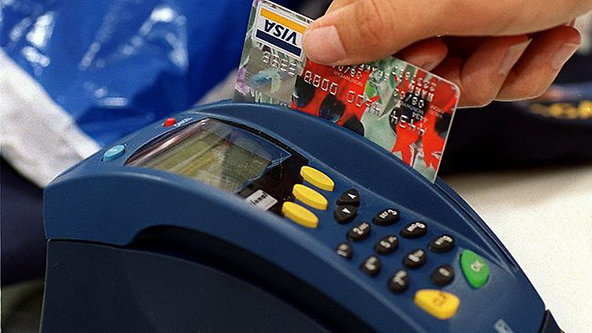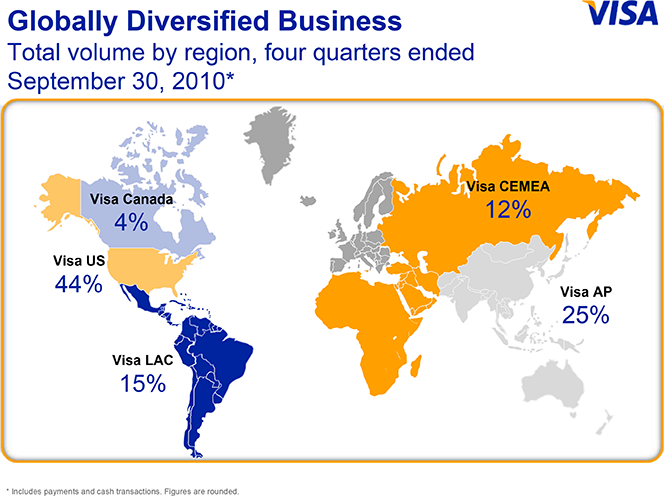Americans Set New Credit Card Debt Repayment Records

Americans set new credit card debt repayment records in February, according to the latest data from Fitch Ratings, as they’ve done quite often over the course of the past three years or so, following spikes in both the credit card charge-off and delinquency rates in the immediate aftermath of the financial crisis of September 2008. Delinquencies and charge-offs peaked in 2009-2010 and since then they’ve been falling almost continually, whereas the monthly payment rate (MPR) has been steadily climbing ever higher.
Given these trends, it comes as no surprise that the aggregate amount of consumer credit card debt fell precipitously in the wake of Lehman’s collapse and has remained pretty much flat since reaching bottom in 2010, despite the population growth and the steady rise in credit card use throughout this period. According to the latest Federal Reserve data, as of January of this year, that total — $850.9 billion — was still lower by 15.8 percent, or $159.4 billion, than the $1,010.3 total measured at the end of 2008. Let’s take a look at the latest Fitch numbers.
Credit Card Charge-offs down to 3.88%
Credit card charge-offs fell in February by 30 basis points from the previous month’s level, Fitch tells us. The new ratio — 3.88 percent — is the lowest one since before the Great Recession started in 2007 and is also lower by 26 percent than the charge-off rate measured a year earlier, we learn.
The charge-off rate is measured as a ratio of all individual credit card accounts with unpaid balances that a lender no longer expect to be repaid by its cardholders, in relation to the total number of active credit card accounts in that lender’s portfolio. Charged-off accounts are written off of the lender’s books as losses, typically at 180 days after the last payment on the account has been received.
Credit Card Delinquencies down to 1.61%
The credit card delinquency rate also fell in February, by two basis points to 1.61 percent, which is the lowest level measured since Fitch started tracking the index in 1991. Moreover, this latest drop has pushed the delinquency rate 65 percent below the peak level reached at the end of 2009, Fitch tells us.
Fitch’s credit card delinquency rate is calculated as a ratio of the credit card accounts on which payments are overdue by 60 days or more, in relation to the total number of active accounts. The ratings agency also keeps track of the “early-stage delinquency rate” for payments that are overdue by 30 – 59 days, however this rate was not reported in Fitch’s latest data release.
It is astonishing to see just how much the credit card delinquency rate has fallen. It’s been a while now since I’ve first started wondering whether there was still room left for the delinquency rate to fall and yet, it just keeps on falling month after month. I guess at this point the only certainty I still have is that the rate cannot drop below zero.
The Monthly Payment Rate up to 24.83%
The monthly payment rate (MPR) is another index tracked by Fitch which keeps amazing me. The MPR is calculated as a ratio of the total amount of credit card debt which American cardholders are repaying at the end of each month, in relation to the total outstanding principal balance on these accounts. In February, the (MPR) jumped by 1.09 percent from January’s level to 24.83 percent, the highest ratio Fitch has ever recorded.
To put this latest measurement in perspective and to get an idea of just how much higher credit card debt repayment now is on Americans’ list of financial priorities, consider the fact that historically the MPR has hovered around the mid-teens. And we don’t know how much further up the MPR is yet to climb. All the indications are that there is still room left for further improvement, but we just don’t know whether or not it will materialize.
The Takeaway
Fitch’s latest data are unquestionably a testament to Americans’ firm resolve to keep their credit card accounts in good shape. Now, that does not mean that Americans are not using their cards. On the contrary, credit card spending has been steadily rising. For example, in its latest SpendTrend analysis, First Data, the biggest payment processor in the U.S., told us that in February the dollar volume of consumer spending by credit cards in the U.S. grew by 7.9 percent year-over-year and. Rikard Bandebo, an economist with First Data, commented that the growth has been “in line with what we have seen in the past six or seven months”.
What remains to be seen is whether Americans will manage to maintain their newly-developed debt repayment discipline as the economy keeps improving and unemployment keeps falling. I believe that Fitch’s indices will eventually recede from their record levels, but as long as the MPR remains above the historical averages, both the delinquencies and charge-offs will also be better than what we are used to see.
Image credit: Etsystatic.com.


